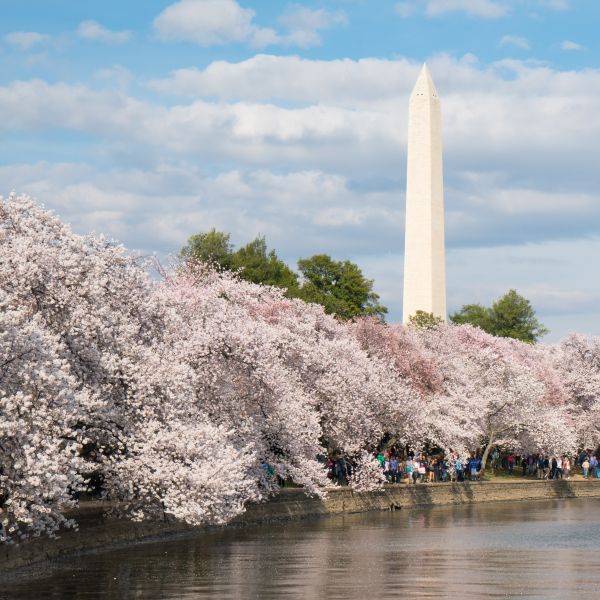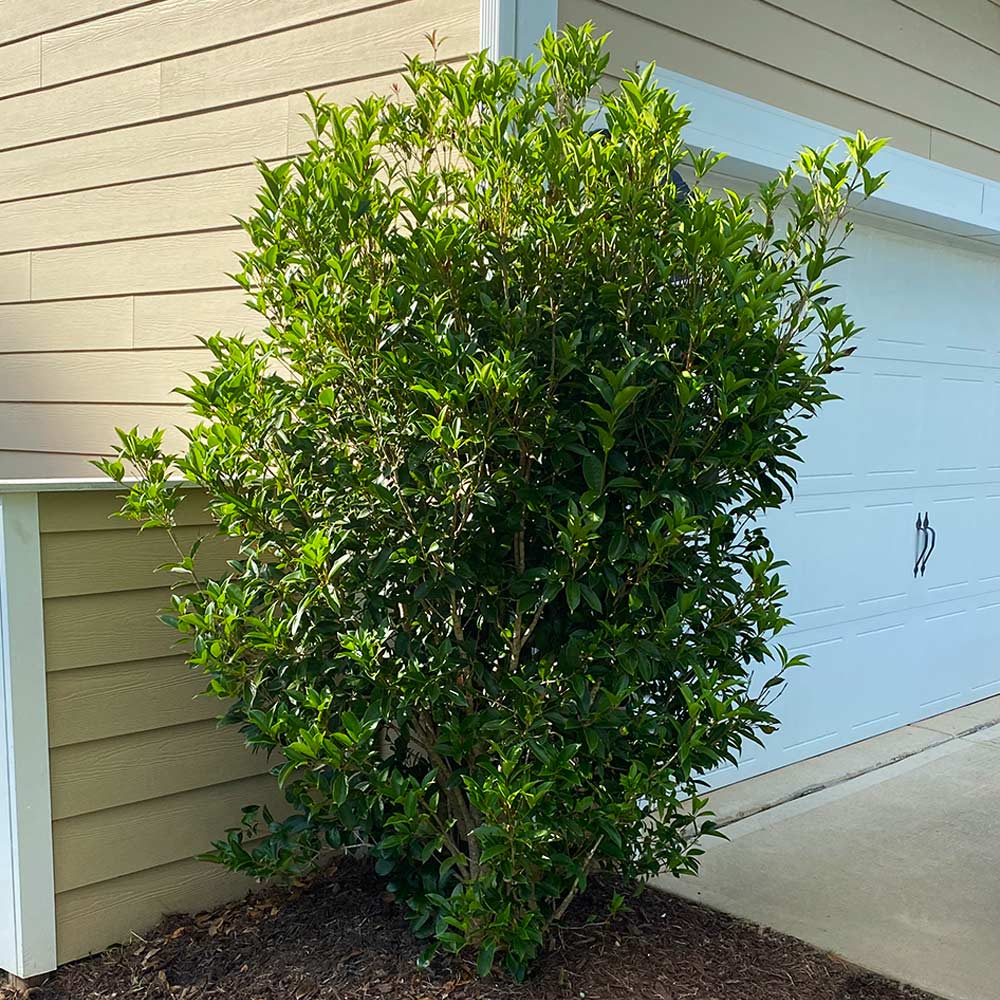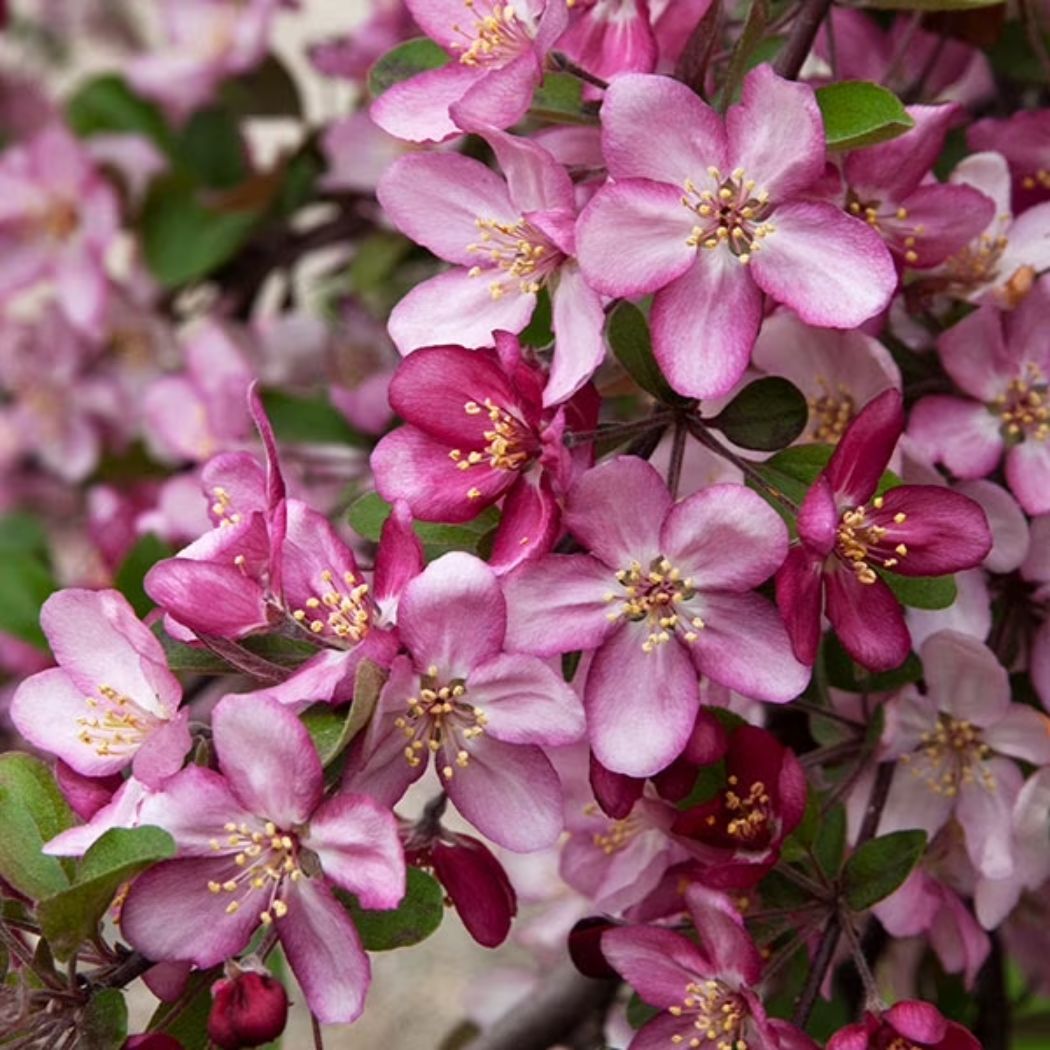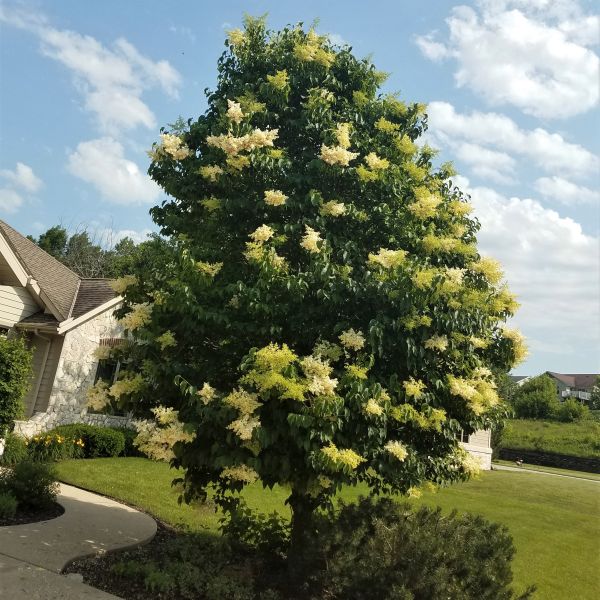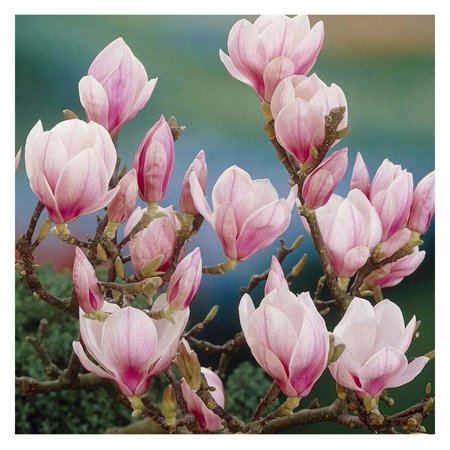5 Fragrant Trees That Will Make Your Backyard Smell Amazing — What Experts Plant for Beauty and Scent
Fill your yard with nature's best fragrances with this expert's top picks for sensational-smelling trees
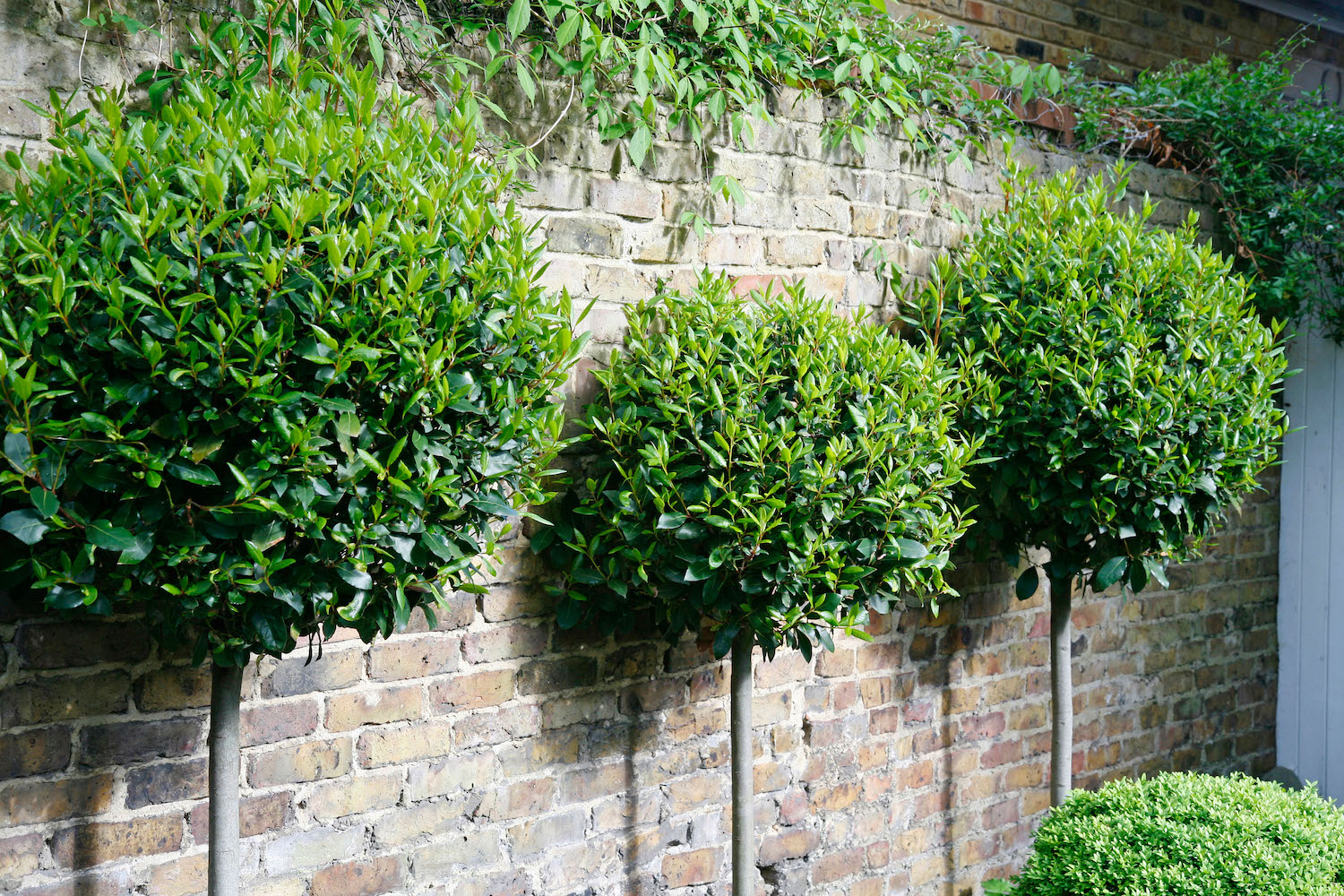
Oh sure, a good-looking yard is great. But does your yard smell great too?
Landscaping remains the foundation of any great garden design, of course, but to take your yard design to the next level you’re going to have to take a deep sensory dive. Sight and sound are a long-established sensory duo in yards – think wind chimes and water features. So is scent simply overlooked when it comes to yard designs? Sure, you’ve got roses and lilies leading the way for fragranced cut flowers, but our expert thinks there is a huge range of fragrant trees ready to take the limelight.
Don’t worry, you won’t need endless yard space to house all these varieties either — some are great trees to grow in pots on a sunny patio or balcony. We asked a tree expert for their best-smelling trees for planting in a backyard — these were their recommendations.
1. Flowering Cherry Trees
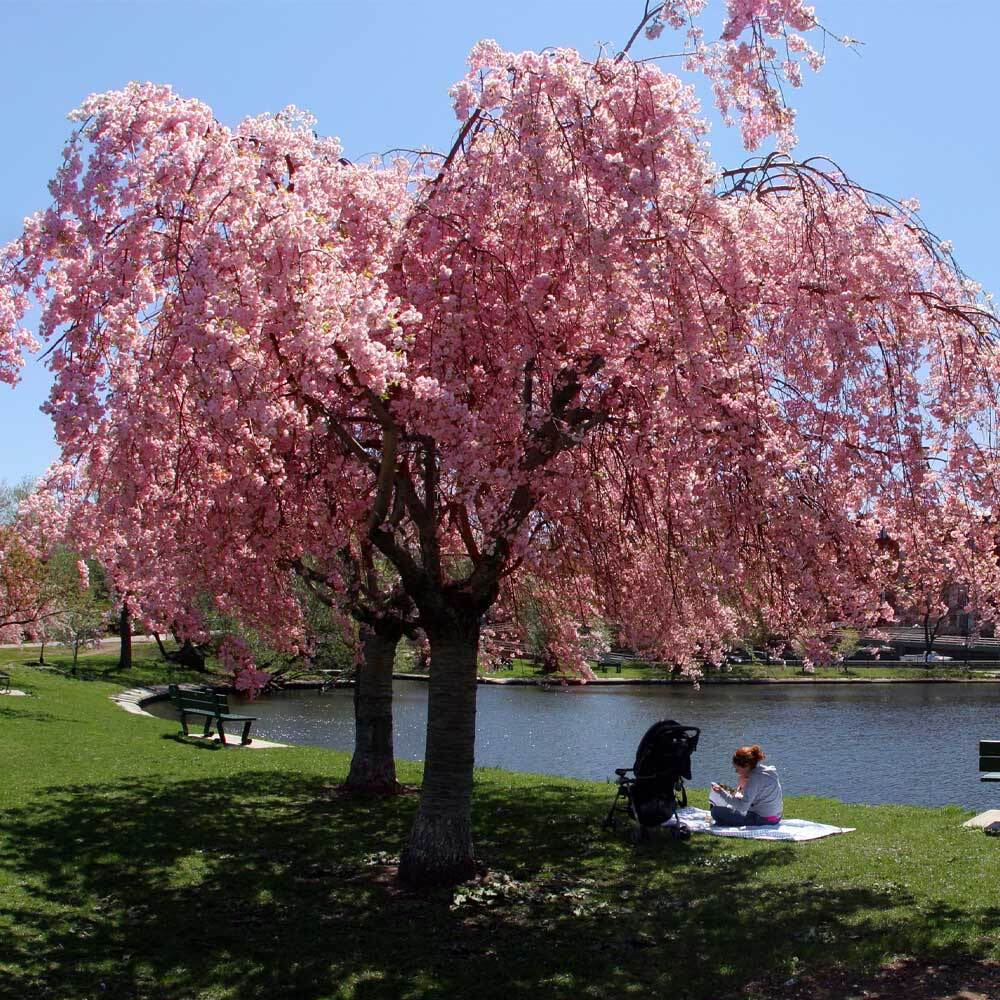
Dark branches smothered in soft pastel petals? It must be a Flowering Cherry tree.
Also called Sakura, these trees are iconic Japanese garden ideas — so much so the annual springtime spectacle is celebrated with special viewing parties called hanami!
As far as scent goes, plant and tree expert Sydni D’Amicio at Fast Growing Trees thinks you can’t go wrong with these blushed beauties.
"Cherry trees are widely known for being the signal of the end of winter and beginning of spring with their blankets of beautiful, and often fragrant blooms," says Sydni. "Not all Cherry trees have noticeably fragrant blooms, however there are some select varieties that are known for their pungent, sweet, almond scent, such as the Kwanzan and Yoshino."
The Livingetc newsletters are your inside source for what’s shaping interiors now - and what’s next. Discover trend forecasts, smart style ideas, and curated shopping inspiration that brings design to life. Subscribe today and stay ahead of the curve.
To get the most of this tree’s scent though, it’s vital you tailor your maintenance techniques. Sydni advises ‘Since the flowers are what give Flowering Cherry trees, such as Yoshino and Kwanzan, their fragrance you must encourage more blooms. To encourage flowers, make sure your Flowering Cherry tree is planted in a location that gets at least 6 hours of sun and avoid over-fertilizing with high-nitrogen products, as those will encourage the tree to produce more foliage rather than blooms.’
Hardiness zones: 5-8
2. Fragrant Tea Olive
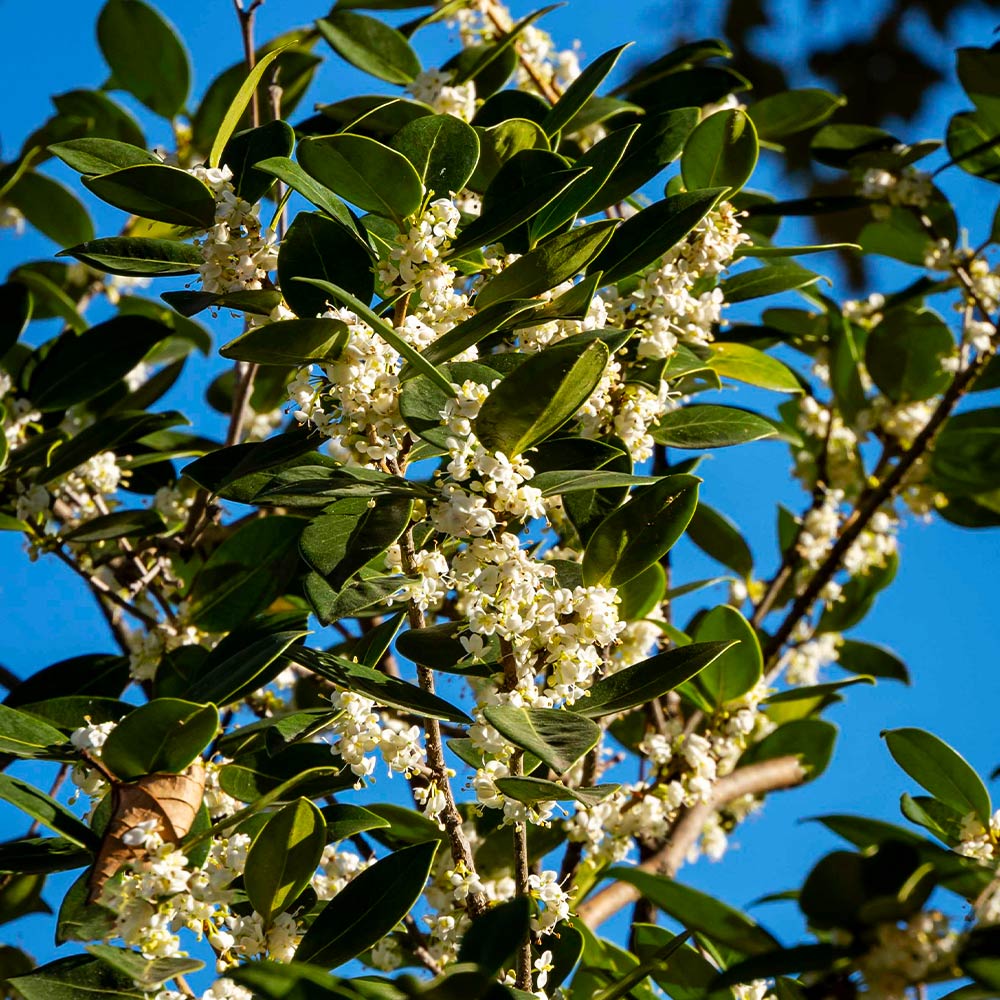
Olive trees are a true staple of Mediterranean gardens, but did you know there is a fragranced olive tree too?
"Fragrant Tea Olive plants are evergreens that grow into large shrubs or small trees with extremely fragrant small white blooms that are reminiscent of the scent of jasmine, ripe apricots, or peaches," says expert Sydni.
Unlike flowering cherry trees though, these scented shrubs will make their first show of blooms when temperatures are a bit cooler. Sydni explains "These trees have a long bloom period extending from fall, periodically throughout winter, and into spring, giving your garden fragrance nearly year-round!"
To keep your Fragrant Tea Olive happy, Sydni recommends giving this tree at least 4-5 hours of sunlight. "Morning sunlight and afternoon shade is preferred for Fragrant Tea Olives," says Sydni, "this will protect the leaves from sun scorch."
Don’t be tempted to prune this tree too late in the year though. Doing so could mean cutting off next year’s blooms! Sydni says "After the main spring flowering period, you can go in and do any pruning needed to remove dead or dying branches. This is also the best time to shape the shrub or tree."
Hardiness zones: 7-10
3. Crabapple Tree

According to Sydni, a Crabapple tree is a sweet-smelling fruit tree to grow that’s not to be missed. "Crabapple trees are flowering deciduous trees with attractive fall foliage and very fragrant flowers that range in colors from shades of green, white, pink, and red," says Sydni. "The blooms emerge in mid to late spring and emanate a scent similar to that of apple blossoms, with a sweet floral, but slightly spicy scent of cinnamon and clove."
Sydni’s favorite varieties include Robinson Crabapple Tree, Sweet Sugar Tyme® Crabapple and Profusion Crabapple Tree. To give these trees the best chance of great blooms, Sydni recommends placing your Crabapple tree "in a location that gets at least 4-5 hours of sunlight. Morning sunlight and afternoon shade is preferred to protect the leaves from getting scorched due to the intense mid-day sun."
To keep on top of your Crabapple’s size, Sydni suggests an annual winter pruning. "Annually prune your Crabapple tree while it is dormant in late winter to get rid of any dead, dying or diseased branches. Doing so will create more airflow and sunlight access to the canopy of the tree, which will encourage more blooms. When pruning, be careful to avoid pruning off the growth of the previous year from the tips of branches, as that will remove the flower buds that have formed."
Hardiness zones: 3-8
4. Lilac
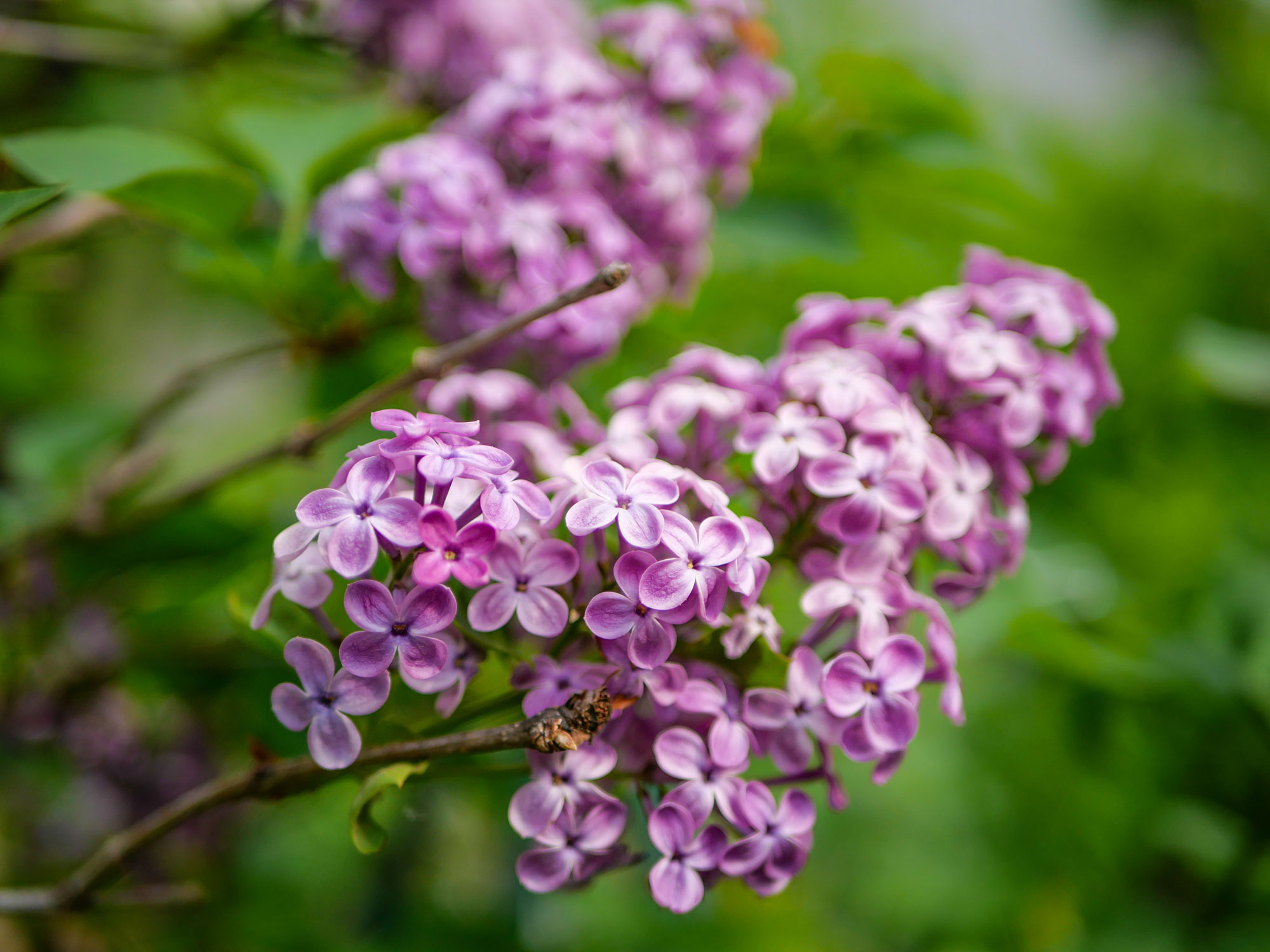
Endlessly romantic, lilacs are a wildlife-loving tree with a truly iconic fragrance that's one of the best plants for butterflies and hummingbirds. If you ask us, nothing quite matches this tree’s glorious springtime scent.
"Lilacs are hardy ornamental flowering trees or shrubs with highly fragrant blooms that emerge in late spring to early summer," says Sydni. "The scent of lilac blooms are often associated with the 'Scent of Spring'; their nostalgic aroma can be described as delicate and floral with notes of honey and jasmine (though the scent can vary depending on the cultivar)."
Sydni’s favorite varieties? Bloomerang® Lilac Tree and Ivory Silk Japanese Lilac Tree. If you’re after a tree with a long blooming time, Bloomerang should be the top of your list. Its delicate pastel pink flowers will bloom twice in a season, once in mid-May and anytime from mid-summer to the first frost. Or, for a large tree in keeping with a clean green and white palette, opt for the Ivory Silk Japanese Lilac tree.
To make the most of your lilac's blooms, Sydni has a few golden maintenance rules: "Prune down any suckering branches that begin to form at the base of the trunk of your tree to prevent them from stealing away energy and nutrients from the tree’s upper canopy," says Sydni. "You can also deadhead any spent blooms to encourage more robust and prolific blooms the next bloom cycle."
Hardness zones: From 2-8 depending on cultivar
5. Magnolia
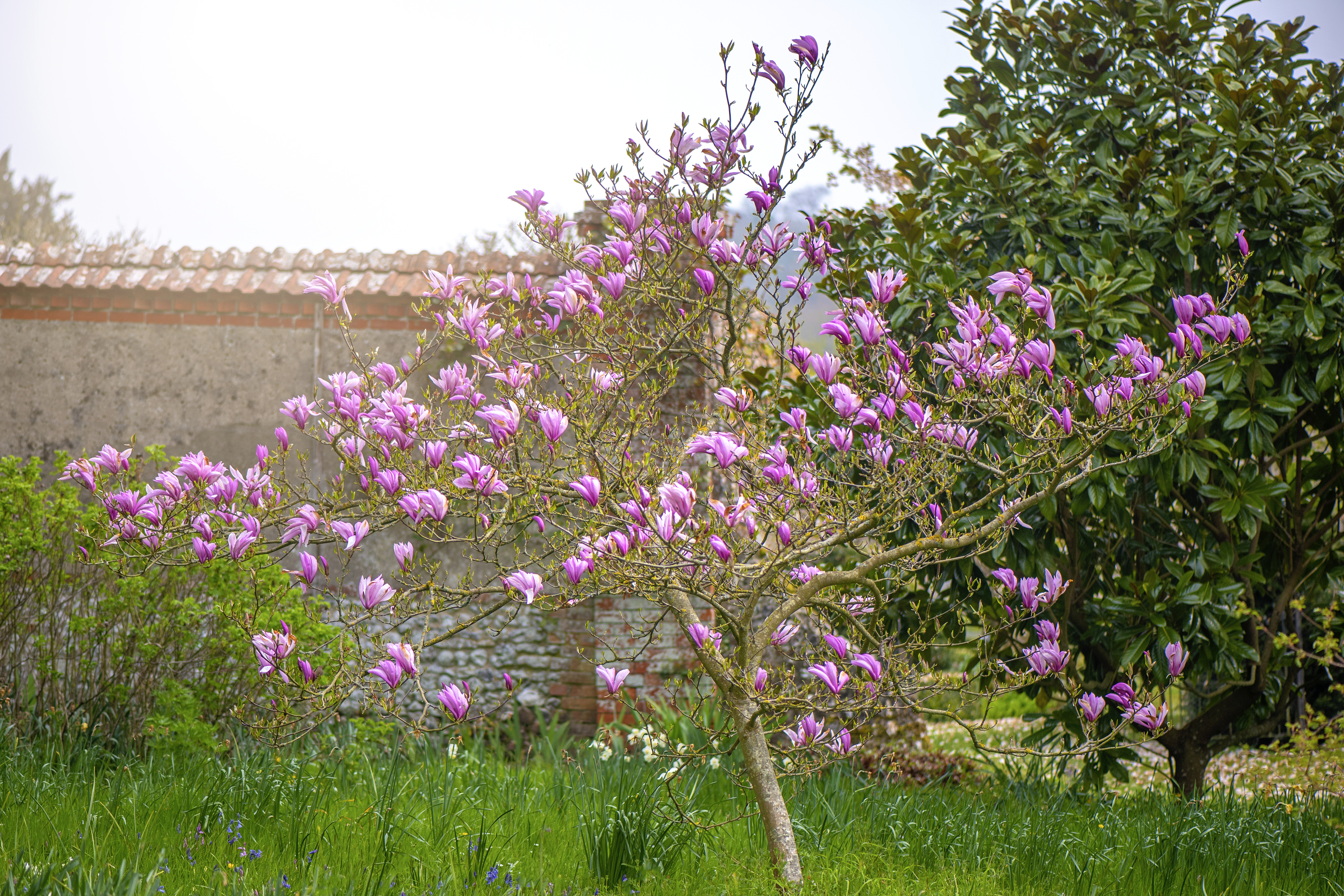
Often the first mark of spring, Magnolias are arguably one of the most impressive flowering trees. But did you know they smell incredible too? Though Magnolias sometimes get a bad rap for being old-fashioned, we think they’re having their renaissance, and so does expert Sydni!
"Magnolias are evergreen to deciduous trees that are famously known for their large, saucer-sized flowers that range from shades of green, white, pink, purple and yellow, and are commonly referred to as the 'Flower of the South'," says Sydni. "The blooms emerge before the leaves in late winter to early summer and their scent is described as being similar to that of a rose, but with a citrusy edge and musky undertone."
Don’t be tempted to overprune your Magnolia tree though, as Sydni explains, these trees are best left to grow happily. "Avoid heavy pruning, as that can cause Magnolia trees to produce less blooms," says Sydni. "If needed, only lightly prune Magnolia trees after they are finished blooming to remove any dead or dying branches. To promote the abundant blooms, amend the soil during planting with organic compost and peat moss. Magnolias thrive and produce the most flowers in well-draining soils that are slightly acidic."
For an expert’s pick, look out for Sweetbay Magnolia Tree, Little Gem Magnolia Tree, and Jane Magnolia.
Hardiness zones: 3-9
Which evergreen tree is most fragrant?
Evergreens are essential components of successful yard designs, but which fragranced varieties comes out on top? If you ask us and expert Sydni, it’s all about bay laurels.
"Bay Laurels are aromatic evergreens that can grow into large shrubs or small trees. As opposed to other fragrant trees, Bay Laurel’s actually get their aroma from their foliage rather than their blooms, giving them fragrance year-round. Even better, the leaves of the Bay Laurel can be used in cooking as well, making them a functional addition to the garden!" says expert Sydni.
"Bay Laurels can survive in zones 8-11 outdoors year-round," says Sydni. But if you’re in zone 7 or below, don’t panic, you can still benefit from this fragranced shrub. "If you are in a zone 7 or below, make sure to keep your plant in a container so you can bring it inside for winter," advises Sydni. Smaller bay laurels do great in containers, plus as their growth habits aren’t too vigorous you can easily prune them into special shapes like pyramids, lollipop trees or leave them to their own devices to fill a space.
Which trees smell like lemon?
If you’re a sucker for foliage bursting with citrus fragrance, hang tight because these trees are must-haves!
Though there are numerous varieties that will give you that famous fragrant hit, a Monterey Cypress tree is a great place to start. Available as both small cone or lollipop-shaped trees, as well as larger mature specimens, this evergreen conifer is perfect for an entrance. Thriving in well-draining containers, placing these trees either side of your front porch will ensure you’re greeted with a heady lemony scent every time you brush past them!
Another citrus-fragranced tree that’s commonly associated with a different signature scent is Lemon Eucalyptus. Naturally evergreen, Lemon Eucalyptus can grow both in a pot or in the ground – but be warned, if you’re opting to plant it straight into the yard make sure you leave enough room! As with most eucalyptus trees, Lemon Eucalyptus can grow in excess of 60 feet high. If you ask us, we’d recommend planting your tree in a container and placing it on the patio, its natural lemony scent works great at repelling mosquitos!
Matilda Bourne is a freelance homes, gardens and food writer, stylist and photographer. Known for creating and capturing content for multiple international brands, her work has been featured in The Telegraph, The Daily Mail, and Hello! magazine. When she’s not writing, you can usually find her tending to her much-loved garden and scouring thrift stores for vintage furniture.
